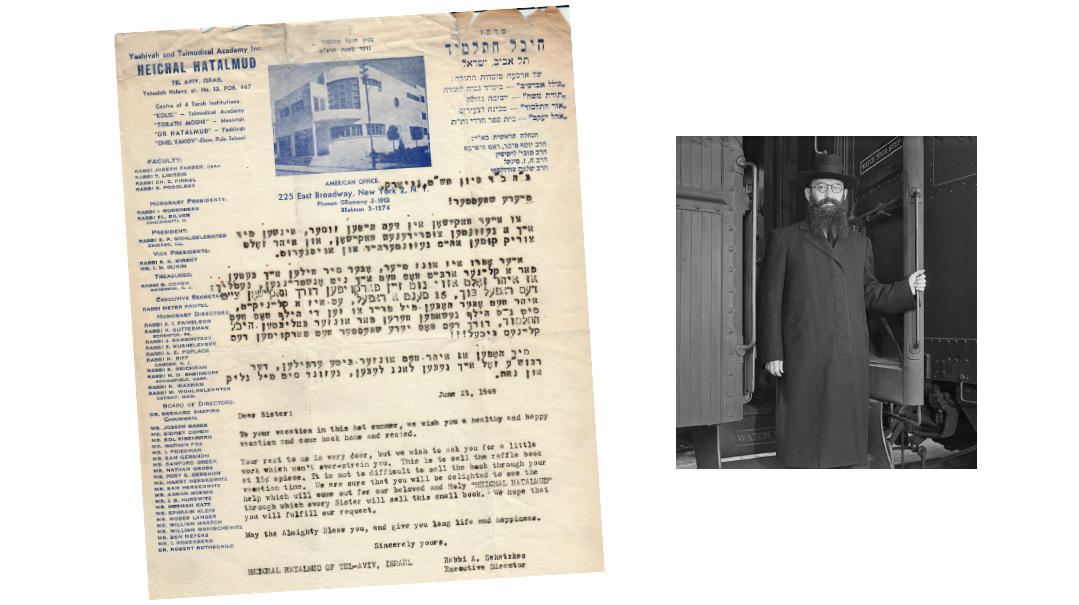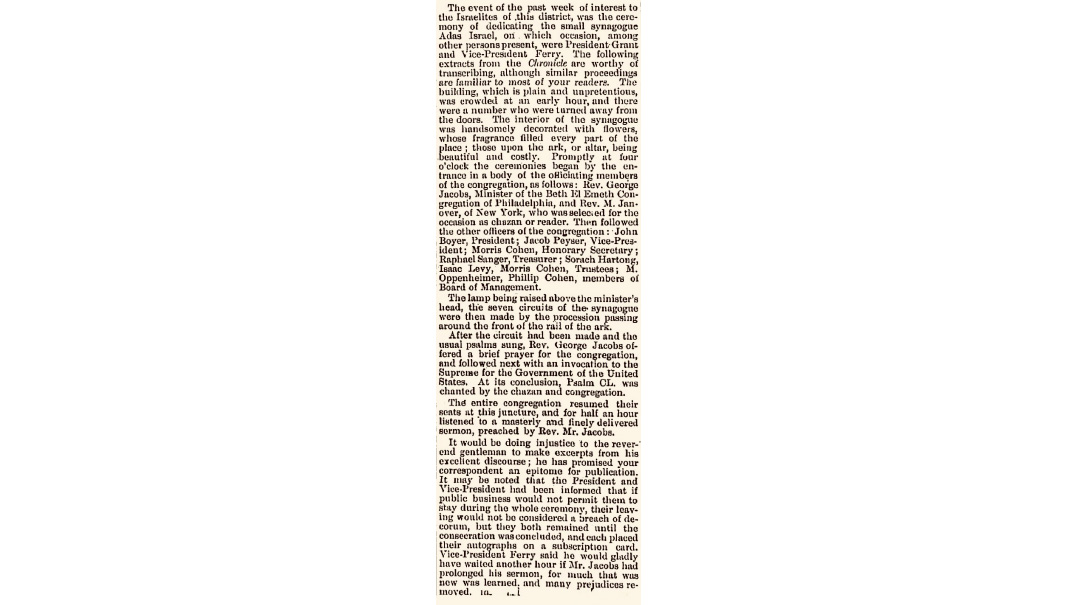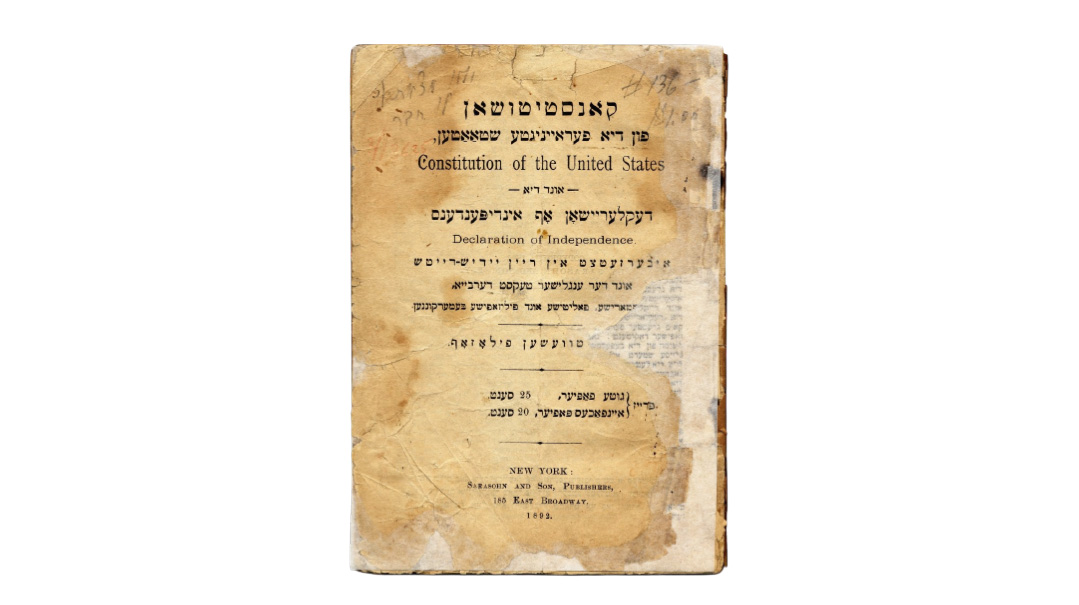A Torah Heichal in Tel Aviv
| February 6, 2024His dream, however, was to establish a yeshivah in Tel Aviv

Title: A Torah Heichal in Tel Aviv
Location: Tel Aviv
Document: Letter to American Sisterhood of Heichal Hatalmud
Time: 1949
“This was the view of Rav Nosson Tzvi Finkel, who was known as the Alter of Slabodka ztz”l. He recognized that this city [Tel Aviv] is the foundation of the new yishuv in Eretz Yisrael, which continues to grow, and that we must concern ourselves with instilling within it a spirit of emunah and Yiddishkeit for Hashem and His Torah. Immediately upon his arrival in Eretz Yisrael in 1925, he sought out ways to rectify the situation there. The population of Tel Aviv then stood at approximately 40,000, a figure Rav Nosson Tzvi would note was equal to the number of those who came from Bavel to Eretz Yisrael in the days of Ezra Hasofer, and we could not forsake such a large Jewish yishuv by not giving them a taste of Torah."
—Rav Dov Katz in Yesodo shel Heichal Hatalmud
Due to his weakening physical condition, the Alter of Slabodka spent the last summer of his life in Tel Aviv. During that time, he gathered his talmidim, alumni, and other yeshivah students in the city for mussar shmuessen, and attempted to establish a beis mussar and organize nightly Gemara chaburos for the benefit of both his talmidim and city residents. His dream, however, was to establish a yeshivah in Tel Aviv. He felt this was imperative for the yeshivah community in Tel Aviv, and it would also have a positive spiritual impact on the largely secular population, and even serve as a beacon of light for the entire new yishuv.
The Alter passed away in 1927, and his beloved yeshivah in Chevron sustained the infamous massacre in the summer of 1929. Though much of the Chevron Yeshivah was ultimately reestablished in Jerusalem, some of the Alter’s older talmidim went on to build a branch of Slabodka in Tel Aviv. Talmidim of Slabodka in Chevron would often spend their summer intersession in Tel Aviv, and even prevailed upon young yeshivah students there to join them in Chevron. Several older alumni had married and settled down there as well, thereby strengthening the Slabodka presence in the city.
In 1931, a group of the Alter’s older students formally opened Heichal Hatalmud in Tel Aviv to serve the local populace. Initially housed in the Great Synagogue on Rechov Allenby, it soon moved into its own impressive edifice at Rechov Yehuda HaLevi 13 in 1934. A yeshivah ketanah named Ohr Hatalmud was soon added to the burgeoning institution, and during the war years, a yeshivah named Pleitas Sofrim was opened on its premises to serve refugees and survivors.
Some elder Slabodka alumni, primarily Tel Aviv businessmen, formed a committee to oversee the operations and development of Heichal Hatalmud. Its members included Rabbis Yosef Zev Lipovitz, Yisrael Chavas, and Yisrael Zissel Dvoretz. The day-to-day operations were managed by a younger group of the Alter’s talmidim from the days in Chevron, including Rav Dov Katz, Rav Chaim Zev Finkel (son of rosh yeshivah Rav Leizer Yudel Finkel and grandson of the Alter, known in the Mir as “Chazap” and served as mashgiach), and primarily Rav Yosef Farber (a grandson of the Alter by marriage) and Rav Tuvia Lisitzin.
Heichal Hatalmud was a multipurpose institution. It served as a place for the growing yeshivah community to stay connected to the familiar world of the beis medrash; it was open to the public, with a diverse array of shiurim and Torah events; and it trained and ordained dozens of future communal rabbis in its kollel. Indeed, in the ensuing decades, many of the most prominent city rabbis and dayanim across the country emerged from the ranks of the Heichal Hatalmud kollel. Some of the more famous ones include Rabbis Eliezer Goldschmidt, Efraim Borodiansky, Dov Mayani, Dovid Wein, Zevulun Graz, and the future Modzhitzer Rebbe, Rav Yisrael Dan Taub.
In August 1935, an important meeting in Heichal Hatalmud established a Slabodka alumni organization called Hisachdus Yotzei Slabodka B’Eretz Yisrael. This was a rare initiative that brought together all the existing branches of Slabodka — Slabodka, Lithuania; Chevron; Yerushalayim; and Heichal Hatalmud, Tel Aviv. Rav Isaac Sher and Rav Avraham Grodzinski, the rosh yeshivah and mashgiach of Slabodka in Lithuania, participated on a visit to the Holy Land. Rav Yechezkel Sarna of Chevron Yeshivah in Yerushalayim and Rav Isser Zalman Meltzer also attended.
With the demographic shift of the Torah community from Tel Aviv to Bnei Brak in the 1960s, Heichal Hatalmud’s role was diminished. The building still exists today, and a kollel studies Torah within its walls.
Chassidim in the Heichal
As one of the prominent Torah buildings in Tel Aviv’searly years, Heichal Hatalmud was used by many chassidic leaders settling there until they could establish their own infrastructure. The Modzhitzer Rebbe, Rav Shmuel Eliyahu Taub, used the beis medrash for his Yamim Noraim minyan. The Damesek Eliezer of Vizhnitz hosted his first tish there upon arriving in Eretz Yisrael in 1944 (he passed away in 1946, but his brother the Imrei Chaim would reestablish the chassidus in Bnei Brak). Many other chassidic events — special occasions, holidays, and yahrtzeits — were also held in Heichal Hatalmud.
Heichal Hasiyum
The third Siyum HaShas of Daf Yomi coincided with a dark time in Jewish history. It was scheduled for November 19, 1945, just as the full extent of the Holocaust was becoming clear. Rav Yehuda Meir Abramowitz, a student of Rav Meir Shapiro and Tel Aviv resident, decided to hold the joyous but solemn siyum in Heichal Hatalmud. The Rebbes of Sadigura and Kopyczynitz came, and other rebbes and leading rabbis and dignitaries were in attendance. The Heichal Hatalmud ezras nashim was filled with women.
The research and writings of Rebbetzin Ramah Finkel and Doctors Shlomo Tikochinsky and Michal Glatter were used to prepare this column.
(Originally featured in Mishpacha, Issue 998)
Oops! We could not locate your form.







